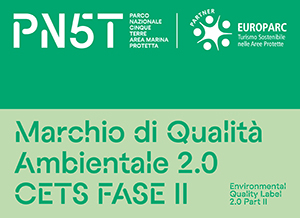The Two Gulfs
Lerici, the pearl of the Gulf of Poets
It is not yet possible to establish the exact year of Lerici's foundation, but the study of its ancient name Portus Illycis, which may derive from the Greek Iliakos (meaning Iliac, Trojan), has fuelled the supporters of the theory that its foundation is to be attributed to a group of exiles from the Trojan War; this theory is also supported by the beautiful landscape of the town similar to the Greek coast and the fact that one of Lerici's bays is dedicated to the goddess Venus.
The village was a port of call for the Greek and Phoenician trades, although its closest link was undoubtedly with the Etruscans, especially due to its proximity to Luni. Because of its importance as a port, Lerici was contended by the Romans with the Ligurians and conquered by them and used for commercial and military purposes. Lerici was also used by the people of Lucca for the trade of skins and cloth, and was later long disputed between Genoa and Pisa at the time of the Maritime Republics. Following the Battle of Giglio in 1241, it was occupied by the Pisans who built the castle and the new walled village. The castle was then enlarged fifteen years later as a result of the reconquest by the Genoese. One of the most important events in the history of Lerici, which even changed the fate of Europe, occurred in 1528, when Andrea Doria took refuge within the walls of one of his palaces and decided to pass from France to Spain, taking away France's dominion over the Mediterranean in favour of Spain.
Between the 17th and 18th centuries, the village experienced a period of major urban development favoured by the presence of a ship-owning nobility who had their residences in Lerici and whose ancient palaces and villas remain. Lerici's monumental castle dominates the town from the top of the rocky promontory and is considered one of the most beautiful in Liguria. It was erected by the Pisans in the first half of the 13th century and, when it came under the rule of the Genoese, in 1256, the imposing pentagonal tower was raised and crowned by four orders of hanging arches; it was also fortified in the 17th century with the construction of strong bastions. The castle is currently in good condition, the outer walls are practically intact and the small 13th-century Gothic-Ligurian chapel dedicated to St Anastasia inside is also well preserved. Completely restored, it will soon become the seat of the geopalenteological museum, unique in Europe for its scientific importance and the technology used.





